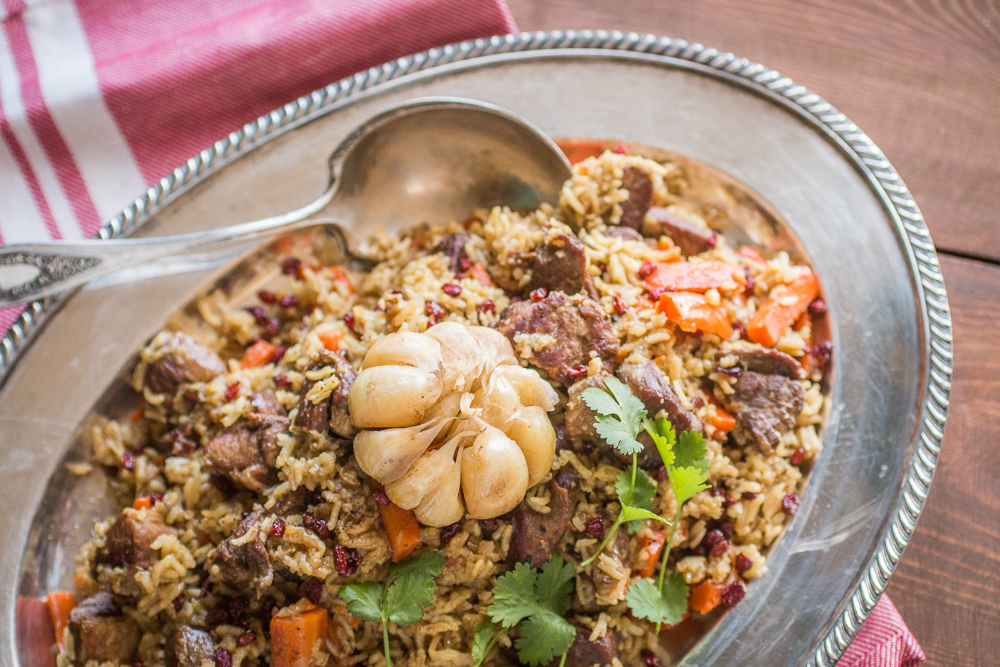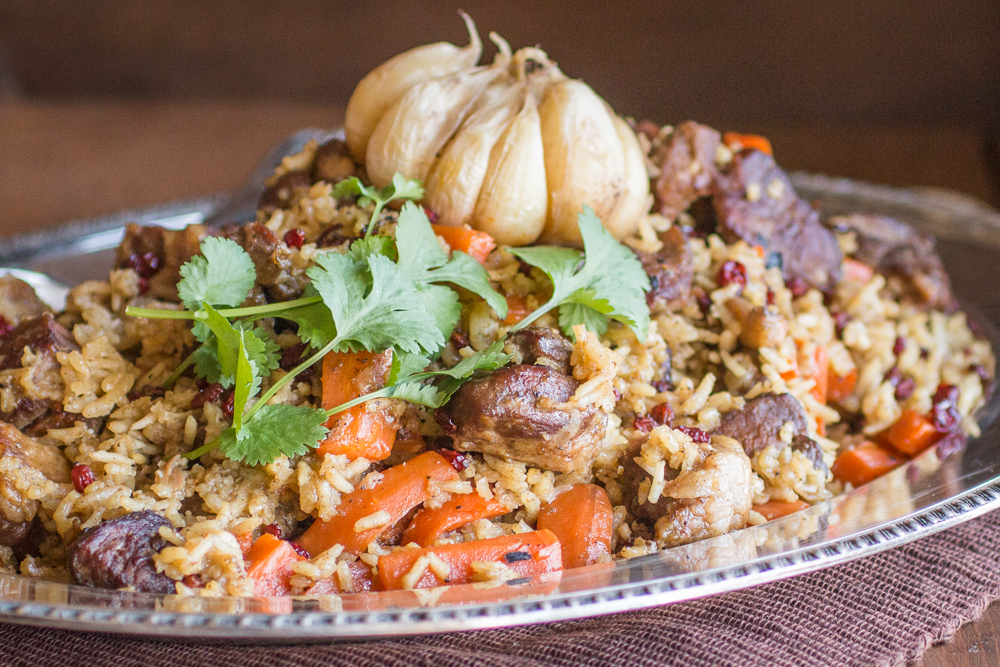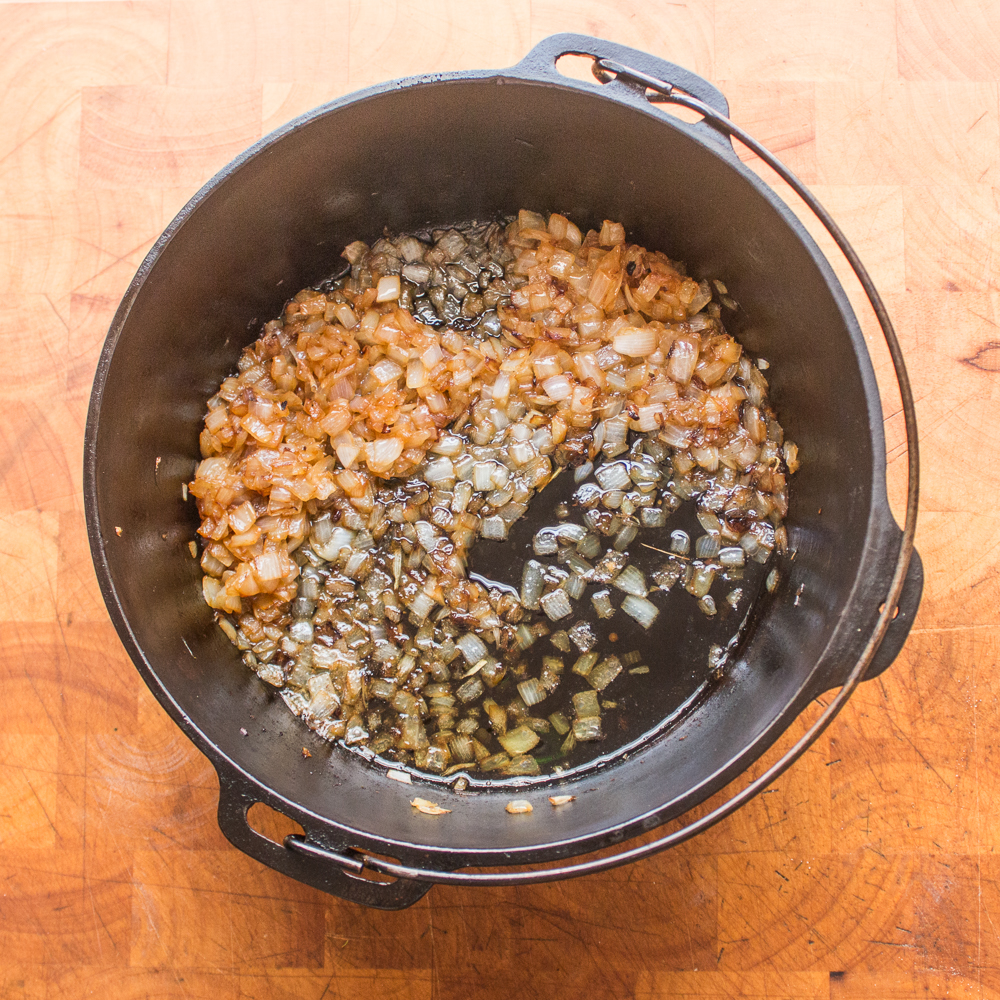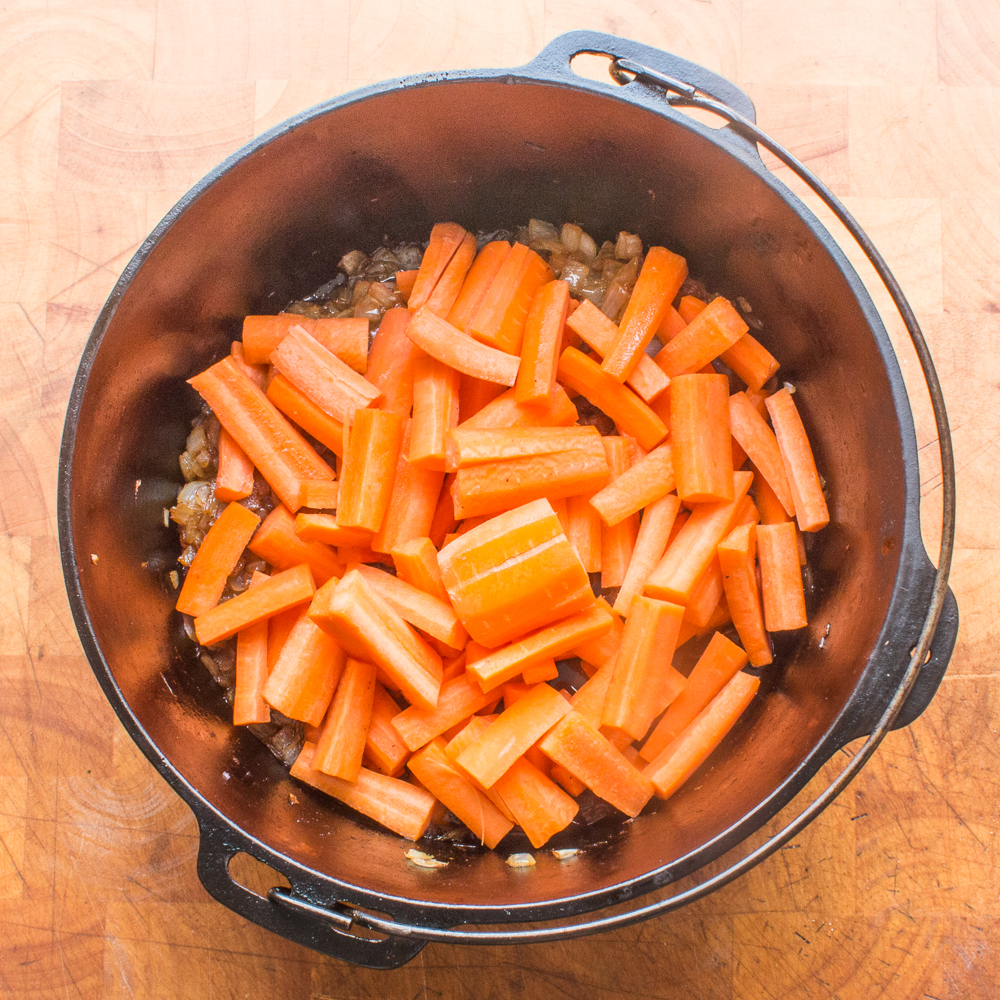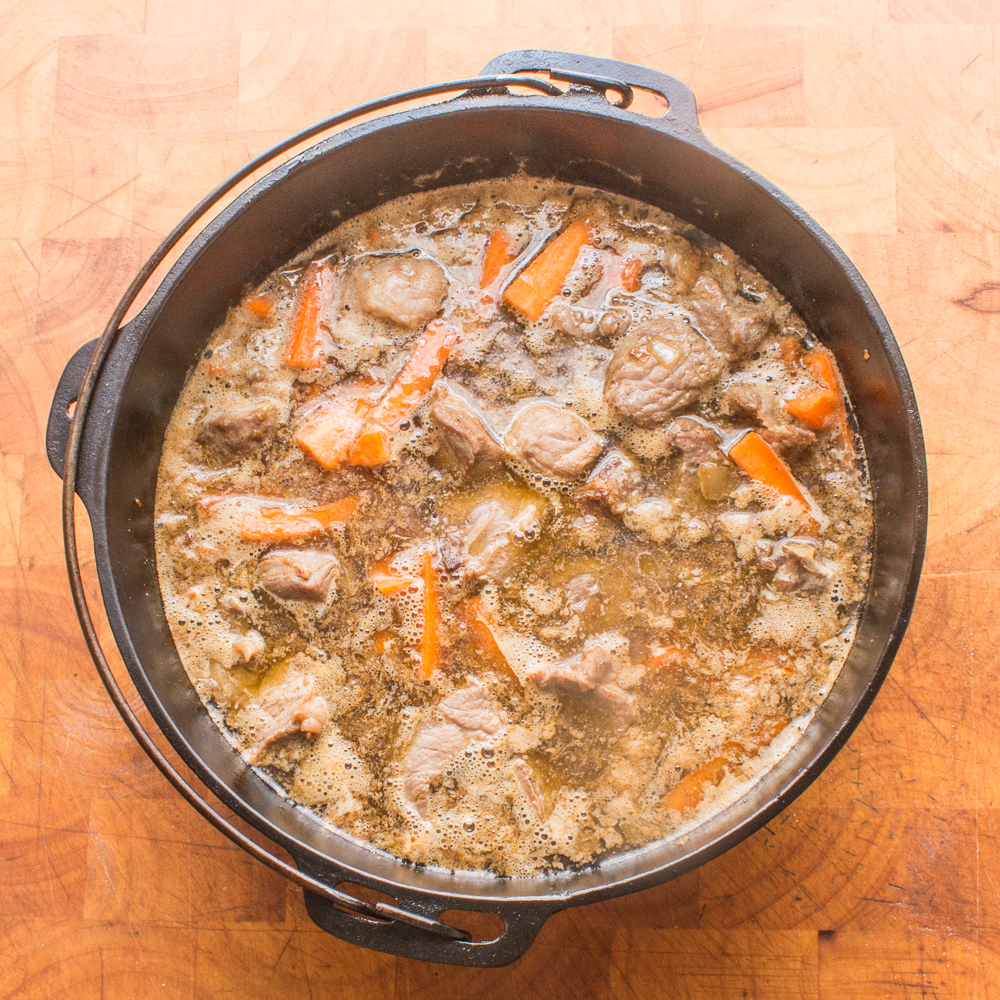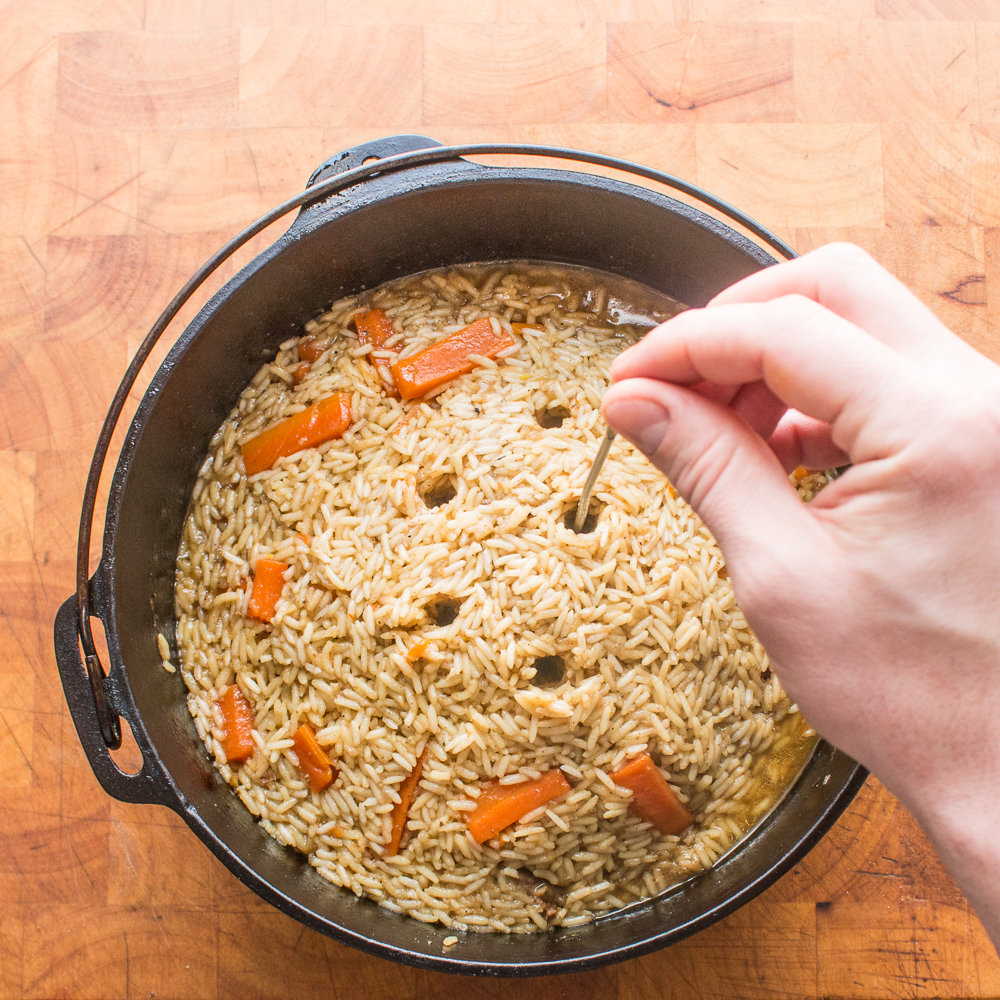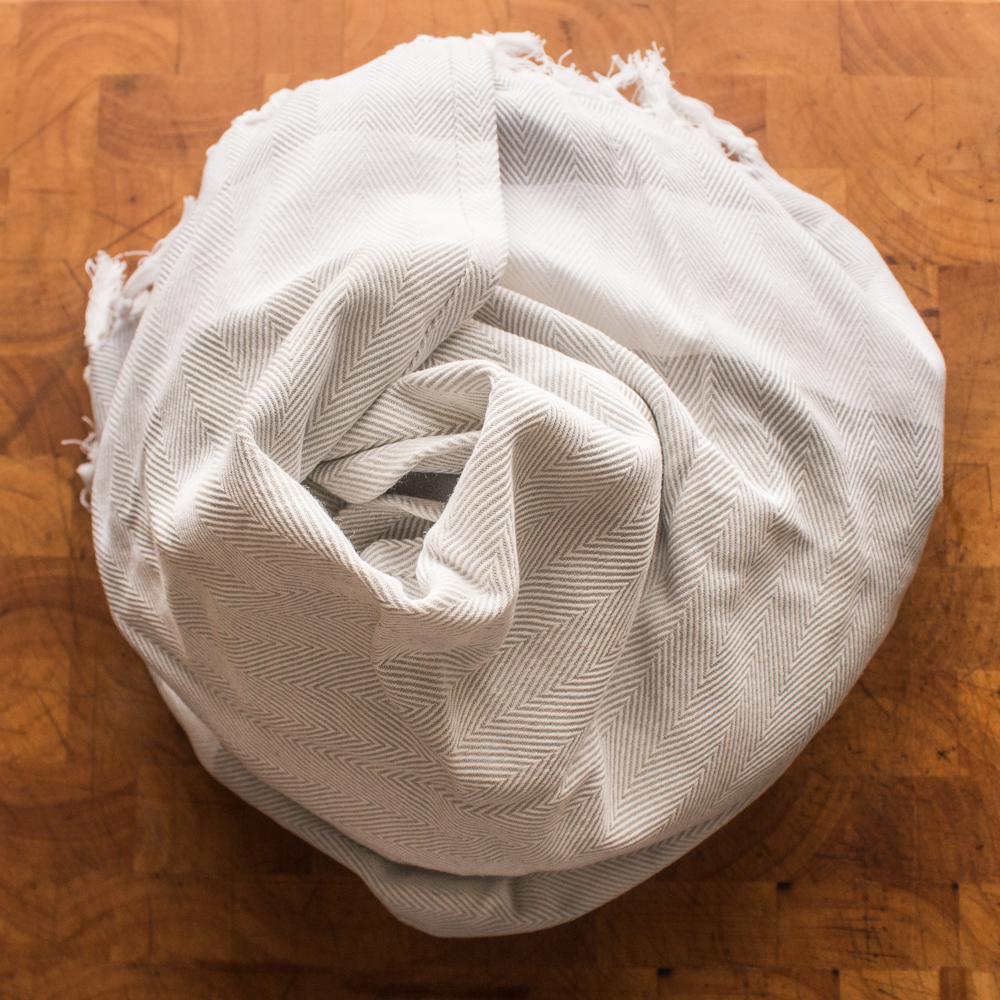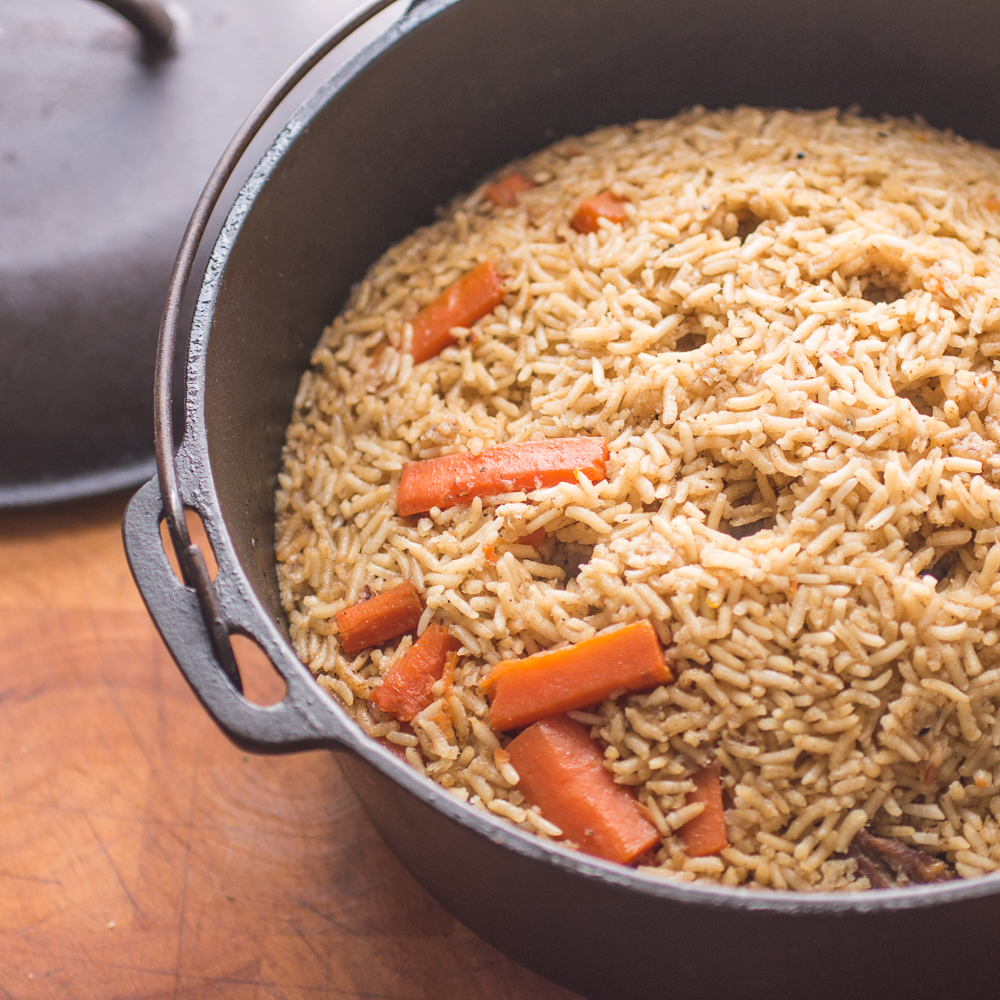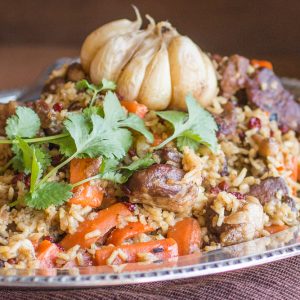Traditional Uzbekistan-Style Lamb Plov (Pilaf)
A traditional lamb plov, or pilaf made with lamb or goat meat is a great recipe to add to your repertoire. Typically it’s thought of as a dish from Uzbekistan, but similar versions are enjoyed in many areas of eastern Europe, the Middle East, the Balkans and Central Asian countries. Just the word pilaf might sound a little uninteresting, but plov is anything but a typical pilaf. Chef Bergo researched and developed this plov especially for us, here’s what he says:
“I didn’t know what to expect at first, but the lamb Plov is probably the ultimate lamb and rice recipes dish. Just imagine rice cooked with fork-tender braised meat in it’s own broth, heavily spiced, but not obnoxious, studded here and there with tiny tart barberries, although cranberries can also be used.” “Trust me, this is essentially the National dish of Uzbekistan for a reason-my family members fought over the leftovers every time I made it while I was developing the recipe”.
Lamb Plov Ingredients
Traditionally plov ingredients are simple: nothing more than some rice, a few spices, lamb, carrots, and onions. The barberries are traditional, and add a great, tart flavor, but will probably need to be ordered online (Chef used these) you can substitute dried cranberries, but they will probably be a little more sweet than barberries, as they’re typically soaked in syrup. If rich meat and dried fruit doesn’t appeal to you, don’t worry, the dish will be just as good without any fruit at all.
How to Make Lamb Plov
It’s fairly straightforward, you braise the lamb and vegetables, then add the rice, but do not stir. Next the rice is brought back to a simmer for a few minutes, then small tunnels are made with a skewer to help air circulate, and the whole pot (preferably cast iron for it’s heat retention) is wrapped in towels and allowed to sit off the heat and steam. After the rice is tender, the pilaf is turned out onto a platter for an impressive family style meal.
The only real trick to getting the plov right is the special technique of steaming the rice. It’s different than how you may have cooked rice in the past, but it’s a fascinating cultural technique, that, once mastered, could be applied to plenty of other dishes.
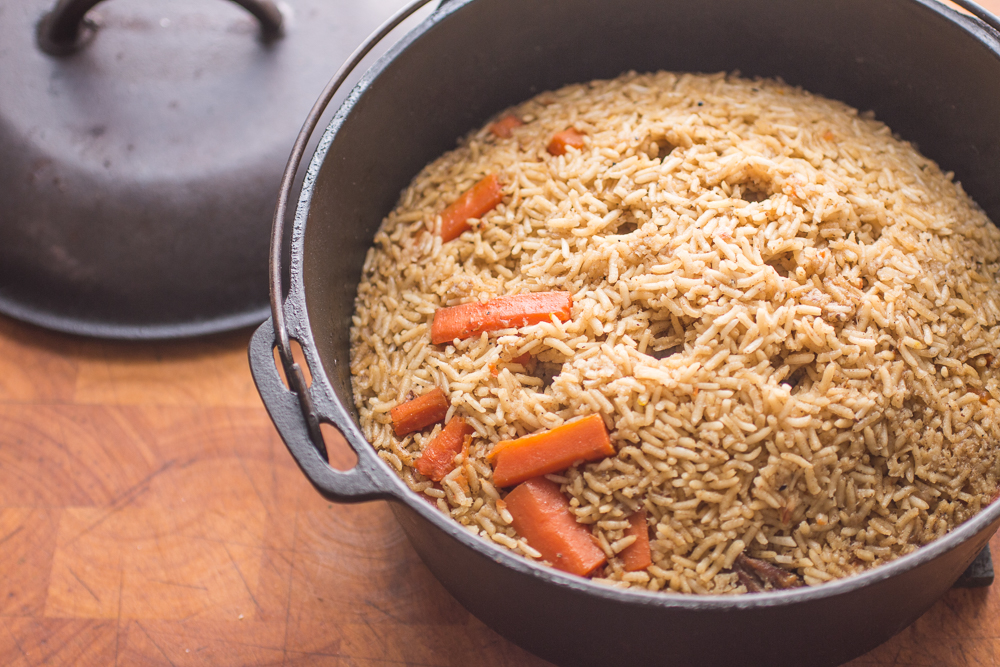
This recipe is by James Beard Award-winning Chef Alan Bergo. He’s a chef from Minnesota and author of The Forager Chef’s Book of Flora. Learn more about Chef Alan at foragerchef.com.

Related Posts
Traditional Uzbekistan-Style Lamb Plov (Pilaf)
Equipment
- 1 Dutch oven
Ingredients
Meat
- 1.5 lbs Lamb shoulder or stew meat or substitute goat
Pilaf
- 1.5 cups Basmati rice Do not use long grain rice or it may not cook properly
- 1 tablespoons salt
- 1 head of garlic
- 1 teaspoon black peppercorns
- 1/3 cup dried barberries plus more to taste (optional) chopped, dried cranberries or pomegranites can be substituted)
- 1 tablespoon coriander seed
- 1.5 tablespoon cumin seed
- 10 oz 1 large yellow onion cut into medium dice
- 15 oz 4-6 medium sized carrots peeled and cut into 2 inch batons to yield 12 oz
- ½ cup lamb fat
- 3 cups lamb stock or 3 cups of water
- Fresh cilantro to garnish, optional
Instructions
- Rub the garlic bulb with your hands to remove as much of the outer paper as possible. Toast the peppercorns, coriander, and cumin lightly, then grind and reserve.
- Cut the meat into bite sized pieces and season with 1 tablespoon of the salt.
- Meanwhile, in a dutch oven, heat the lamb fat or oil until lightly smoking. It will seem like a lot of fat.
- Brown the lamb in the fat, remove and reserve, then add the onion to the lamb fat, stir for a few minutes, and cook until translucent.
- Add the stock, garlic bulb, barberries and spices, along with the lamb back to the pan, cover and cook at a gentle simmer for 30 minutes.
- Meanwhile, rinse the rice in water until it runs clear.
- Sweat the carrots on medium-high heat in a separate pan for 5 minutes, then add them to the pot at the 30 minute mark. Simmer gently for another 30 minutes, covered.
- Next, push the lamb and carrots under the liquid to give the rice somewhere to go.
- Drain the rice well, then spread on top of the lamb in the lamb-carrot mixture being careful not to stir.
- Press down on the rice a bit, to make sure it's just barely covered with liquid. If for some reason your liquid cooked down too far, add just enough water so that the rice is barely covered.
- Cover the pot and cook for another 20 minutes at a very gentle simmer.
- Remove the lid, and, using a spoon, mound the rice carefully into a dome shape so the rice isn’t touching the walls of the pot (see picture)
- Using a chopstick or the handle of a thin wooden spoon, make a few holes going down to the bottom of the pot to create a channel for the steam to release through, to help ensure a fluffy pilaf and allow the rice to finish cooking by steaming.
- Remove pot to a trivet, wrap tightly in a thick towel, and allow the plov rest and steam for the final 20 minutes before serving.
- To serve the plov, remove the lids and towel, remove the rice first using a spoon, then mound the meat on top, garnish with cilantro and the garlic bulb and serve immediately.
Notes
- This is more complex and touchy than your average pilaf. Read the recipe and look and the pictures carefully before proceeding.
- Whole bone-in or boneless lamb or goat legs can be used instead of pre-cut stew meat, and are more economical.
- Some recipes call for jasmine rice, but I prefer basmati.
- Leftover plov is delicious although the rice may start to break apart.
Nutrition
